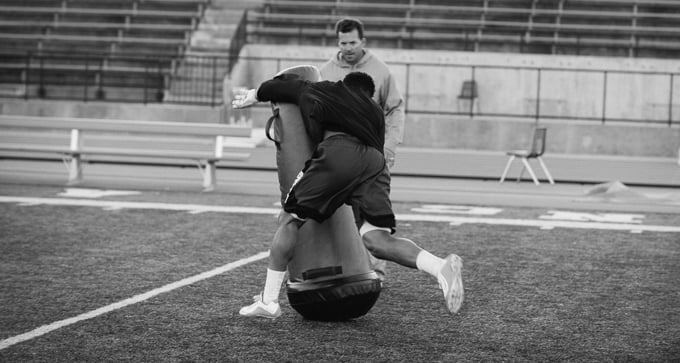
I vividly remember the summers of my high school and collegiate life, laying on the couch for 4 hours between football practices to recover from dreaded double days in the August heat. Due to unfortunate consequences related to player health, these double training sessions have been phased out of many programs, but when conducted in a safe environment (ample hydration, recovery, etc.) there can be great benefit, especially for athletes returning to play form injury. Injured athletes not only want to return to play as quickly as possible, but because they are not practicing and competing have much less stress (outside of training) than athletes who are participating full time. This begs the question, how much is too much?

Fatigue is an athletes’ loss of ability to produce the same neuromuscular output. The basic pattern of fatigue response follows a bimodal pattern, a continuous probability distribution with two different modes (peaks-see image above). The first peak represents reduction in performance following exercise, primarily caused by metabolic fatigue. Recovery from this fatigue usually takes 1-2 hours. The second peak is the result of induced muscle damage and subsequent inflammation, which may often show the greatest fatigue on the second day post-exercise when the symptoms of muscle soreness/damage are also greatest. Full recovery from this fatigue may take 4-8 days depending on the severity of the exercise.
Initially, these findings on fatigue were from isolated, fatiguing exercise (jumping to exhaustion) in a lab. Having observed the same phenomenon with our athletes for years, new studies (PubMed) are confirming that fatigue bimodality occurs as a result of other explosive efforts as well, not just jumping in a lab. In that study, researchers had subjects (male rugby players) perform 6 maximal effort 50 meter sprints with 5 minutes rest between each sprint. The authors concluded that the first decrease in output (immediately post session—2 hours post session) was due to decreased functioning of the contractile mechanism of the muscle fiber from buildup of metabolites like blood lactate. The secondary decline at 24 hours was thought to be due to the inflammatory response from the normal muscle damage that occurs during exercise.
The take-away is that training every other day (norm) may be less beneficial than training days that include 2 session a day. For injured athletes, the lower intensities of their training initially, plus the larger time availability in a day from reduced/absent sport involvement, creates an opportunity to help shorten their return. So we often have these athletes begin training 2 sessions a day until sport involvement assumes that 2nd session. Any setbacks (soreness, swelling, pain, etc.) just signals a need for rest, so the double day sessions are reduced until adaptations are sufficiently made by the body to resume the work.
We have our athletes who train twice a day take a 4 hour break between session, which covers the 2 hour performance recovery, as well as an additional 2 hours for a meal (fuel!) and digestion to allow that replenishment to have a positive effect on the subsequent training session. Most of these individuals instinctively have included a nap during this period. Research has clear results showing improved alertness from these shorter sleep bouts, yet we recommend less than 30 minutes to avoid “sleep inertia”, why we feel groggy if more time allows the body to slip into deeper sleep stages.
• Allow at least 2 hours to recover from initial peak of fatigue (end of your last exercise)
• Refuel with food between sessions, but also allow subsequent time for digestion
• Aim for a 20 minute nap to aid alertness of the additional activity that day